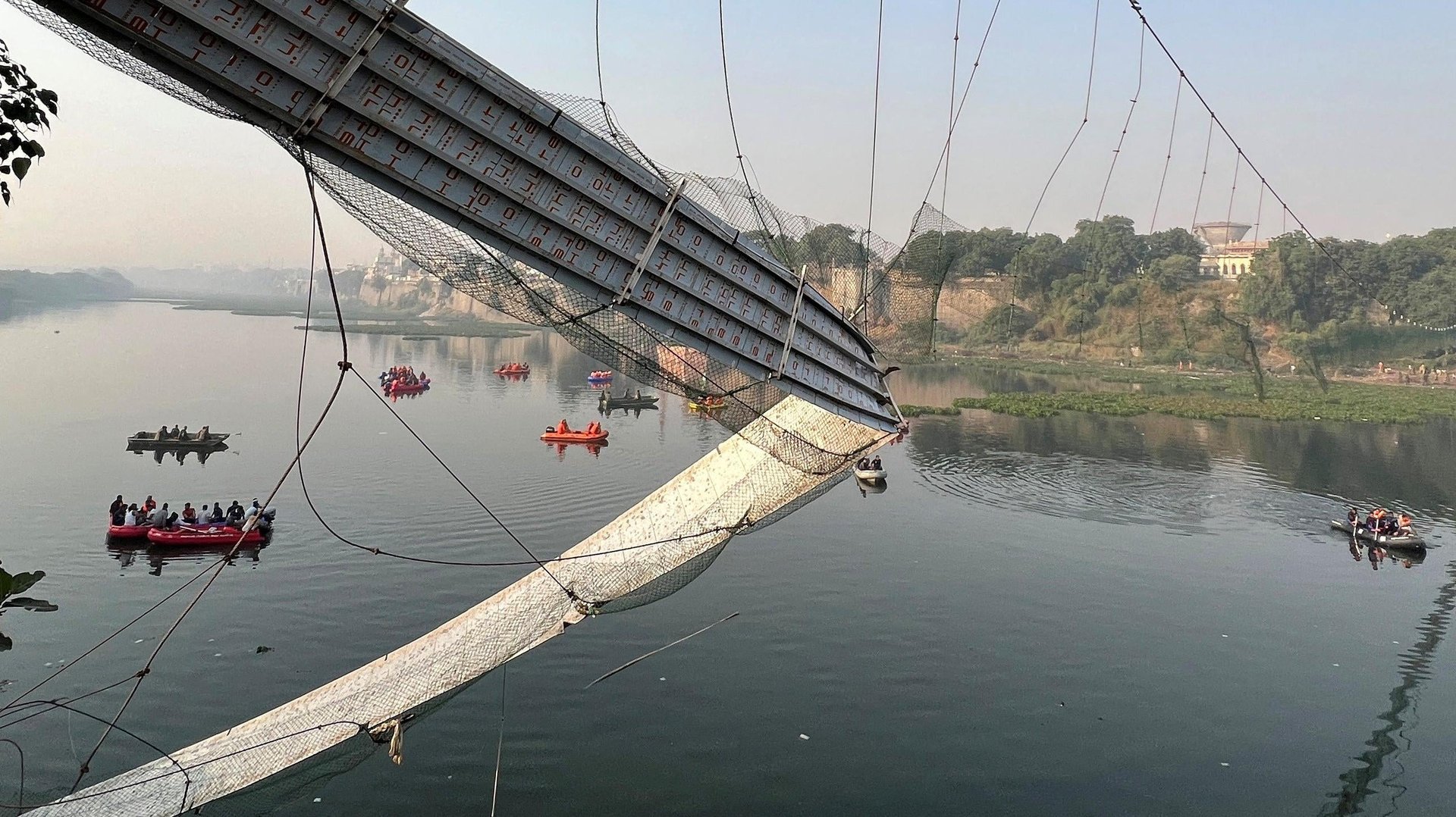A British-era bridge collapsed in India, killing 141—just five days after renovation work
The bridge was operated by a private company Oreva Group, which also manufactures e-bikes

A 143-year-old suspension bridge in Morbi, in the state of Gujarat, reopened five days ago after extensive repairs—only to collapse on Sunday (Oct. 30), killing at least 140 people.
A search-and-rescue operation for missing people, conducted by the army, navy, air force, National Disaster Response Force, and fire brigade officials, is under way.
The suspension bridge, spanning 233 metres, had shut down in March for renovations by Oreva Group, a Morbi-based company, at a cost of 2 crore rupees ($242,735). But the state government had not issued a fitness certificate after repairs ended, and the bridge reopened on Oct. 26, the Gujarati new year.
A clock and e-bike manufacturer renovated the Morbi bridge
The Oreva Group was founded in 1971, when Odhavji Patel started Ajanta Orpat, a wall clock manufacturing business. The popularity of these clocks in India turned Oreva into the world’s largest clock maker.
Subsequently, Oreva diversified into other products: lighting fixtures, e-bikes, home appliances, electronic products like telephones and calculators, and ceramic tiles.
But Oreva makes no mention of any civil engineering or construction experience on its website—which went offline on Monday afternoon. This raises question about how Oreva won the contract to renovate the bridge.
“It was a government tender,” Sandeepsinh Zala, the chief officer of the municipality of Morbi, told the news channel NDTV. “Oreva group was supposed to give its renovation details and get a quality check before opening the bridge. But it did not do so. The government was not aware about this.”
Why did the Morbi bridge collapse?
A spokesperson for the Oreva Group told the Indian Express newspaper: “While we are waiting for more information, prima facie, the bridge collapsed as too many people in the mid-section of the bridge were trying to sway it from one way to the other.”
Officials said that the 1.25-metre-wide bridge was build to hold the weight of only about 125 people. When the cables snapped, there were around 500 people on the bridge, according to news reports. Many victims died either by drowning or by related injuries as they fell into the 20-foot-deep Machchu river, officials said.
Until the renovation, the bridge had stood steady since its construction in 1879. It was commissioned by a ruler of the princely state of Morbi, Waghji Ravaji Thakor, who was inspired by the great British suspension bridges of the 19th century. Intending to connect two royal residences on either side of the Machchu, Thakor built the bridge using state-of-the art European technology. On its website, a Morbi town authority touts the bridge as “artistic and technological marvel” of its period—a description blemished now by the mistakes and flaws of the current period.